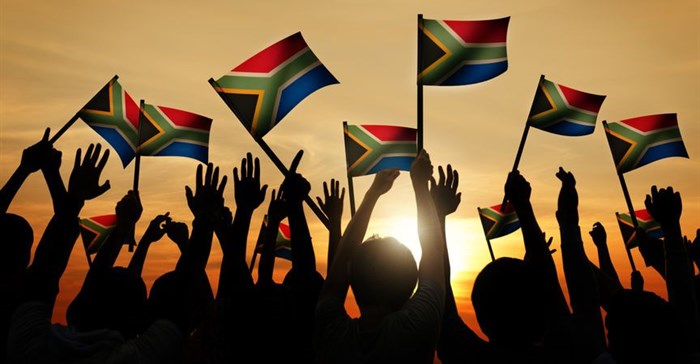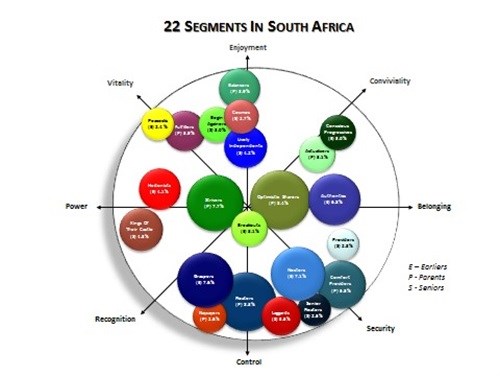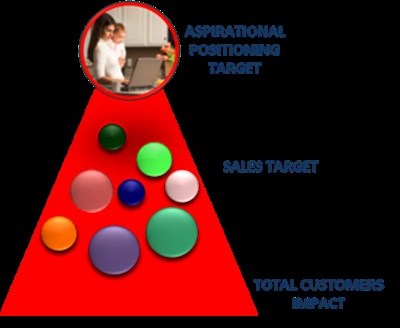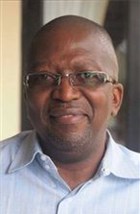
How can we use the science of marketing to understand and connect to actual human motivations? Political parties need to understand the needs, fears, hopes and aspirations of what has become a more diverse South African people.
In this article, you will be presented with some new research into the South African population. It is based on a sample size of more than 15,000 people answering 8,000 questions across hundreds of categories, thousands of brands, lifestyle, shopping and media. If we want to understand our target groups, we need to stop falling into the trap of thinking about them as category consumers.
Our very own small, narrow category. This is a mistake. Look bigger, use big data and understand their motivations. This is why I find politics so interesting. If there is one field, where you need to understand your target as real human beings with full lives, it is in politics. So, what does South Africa look like?
South Africa is unique in an international context. There are some things we see in South Africa that we have never seen anywhere in the world. Let’s start with the conclusion.
There are 22 human segments in the South African population. It does not matter what you are selling. This segmentation goes across all brands and categories.
Which of course makes perfect sense. You are the same human being when you vote, buy a phone, clothes or anything else. A common mistake for marketers is to do category segmentations. This is South Africa:

The segmentation takes into account our big data single source database with some complex logarithms and also utilising Alfred Adler’s work on human motivation and his visual ‘Adler’s Map’.
Here is a quick explanation to aid in understanding the map and the segments.
Across the broad spectrum of our lives, we can point to many things that are unique to South Africa. Well, this is also true with respect to our human-centric segmentation.
When compared to the segmentation that exists in the other markets around the world that we work in and have worked in, a few things are apparent that we only see in South Africa:
1. A rainbow nation
South Africa is the only market that we have seen (so far) where the segments are almost evenly spread across the map. This diversity does not exist in any other market.
For example, in Russia, there is a weighting of segments on the left-hand side. People tend to accept a flashier lifestyle with a value set of recognition. As you probably have realised Putin plays on this very effectively in his PR communication.
In Saudi Arabia, there are literally no segments in the top right-hand quadrant. Displaying a modern, social emancipation type of attitude will get you arrested in The Kingdom of Saudi Arabia. In Norway, there are basically no segments in the bottom left-hand quadrant. Traditionally, showing off in any way is seriously frowned upon by Norwegians.
2. Clear groupings – 3 layers
When you look at the South African segmentation map, you see very clear groupings of the segments in three clear layers: there is a group of segments at the bottom of the map, a group of segments in the middle and another group at the top.
More to the point, these groupings are according to income and education levels. Because of our history, we find a higher percentage of the white and coloured population within the top segments of the map. Such is a strong division is unique in our international experience.
3. Broken influencing patterns
In South Africa, the influencing patterns are broken. In marketing communications, what we must always try to achieve is effectiveness and efficiency. In segmentation models there are two types of segments:
1) Your aspirational portrait and 2) Your sales targets. Do not fall into the trap of thinking your big volume segments are necessarily your aspirational portrait. They are often the followers. That means that one of the 22 segments you see above is your brand's aspirational portrait. And others are your sales targets. This is vital.
The aspirational portrait is the segment that we select as the face of the brand and it must represent something that consumers aspire to. However, to be efficient, our communication needs to be able to influence a broader set of consumers so that we can achieve significant sales volumes.
We resolve this dilemma with the influencing patterns between segments. This is either direct through word of mouth. Or indirect through the choice of value sets spread through mass media.
This means that as part of deciding which segment to select as the aspirational portrait we mathematically compute how each segment influences other segments.
We can then make the selection of which segment is the aspirational portrait with a clear understanding of the implications with respect to the effectiveness vs. efficiency trade-off.

Simple right? Not in South Africa unfortunately. In South Africa, these influencing patterns are broken. Segments in the different layers discussed above generally have no clue about how segments in the other groupings live. This is especially so between segments at the top and segments at the bottom.
An individual in a segment on the top half of the map won't’ be aspirational for a person in a segment on the bottom half of the map. Their lifestyles and value systems are so far apart and they also do not interact with each other.
These three peculiarities of South Africa do mean that the work of marketers in South Africa is uniquely challenging. In other markets, you may get away with making a mistake. Not so in South Africa.
In this season of political campaigns, I also could not help but wonder if parties really understand the magnitude of their communication challenge in South Africa. How exactly do you reach this wide audience with a focused and relevant message?
Our very raison d’etre (building brands that our consumers love and that become interwoven into their lives) calls for us to achieve an intimate understanding of people. Human beings make decisions based on emotion and then find rational reasons to justify those decisions.
In other words, they have tension points. Good brands make emotional connections by touching these tension points and then provide a release with their communication: the right message, at the right time, in the right place to the right people.
To be able to do this successfully, we must understand people as human beings with full lives. Not simply understand their behaviour in terms of how they interact with our own category. This is the core of what I call the human-centric marketing approach.
You will recognise the following from the party manifestos:
“Our Land and Jobs Now” - “A Better Life for All” - “South Africa Needs a Fresh Start”So who has the right message and is communicating it best to win the hearts and minds of South Africans?“One South Africa for All” - Slaan Terug” - “You Deserve a Leadership that is Honest and Good”
